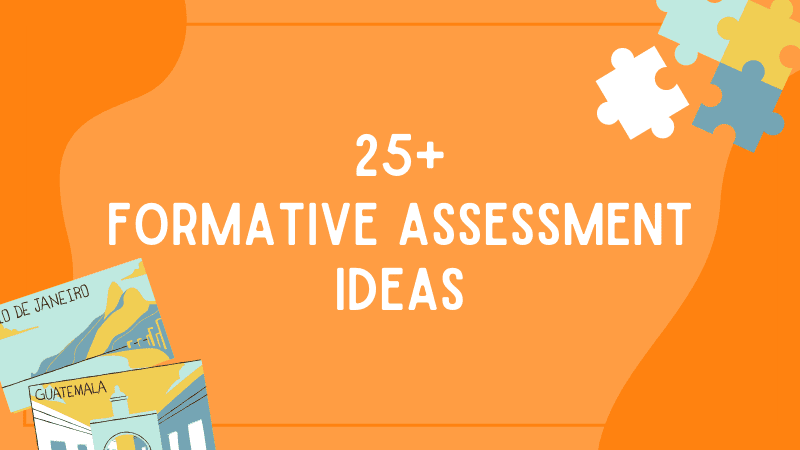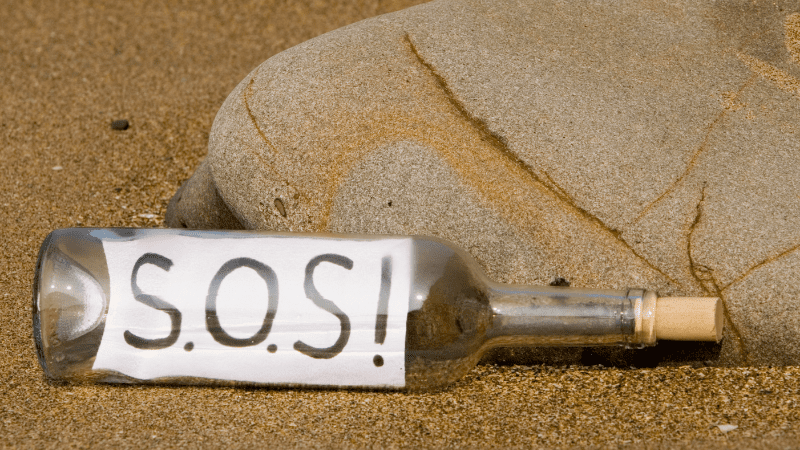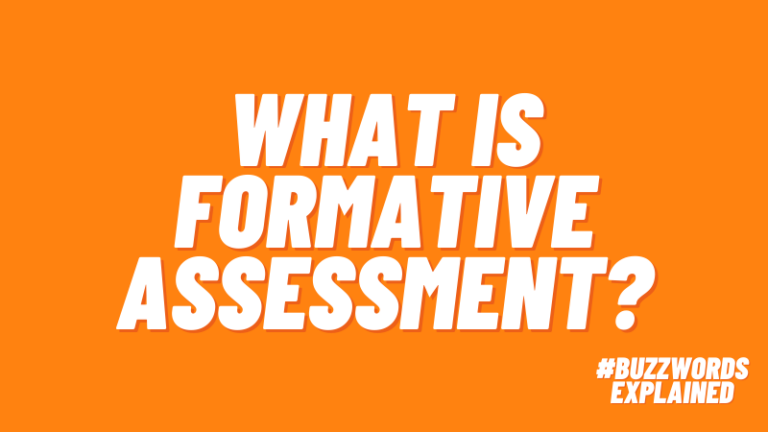Formative assessment is the piece of the teaching puzzle that allows us to quickly (and hopefully, accurately) gauge how well our students are understanding the material we’ve taught. From there, we make the important decisions about where our lesson will go next. Do we need to reteach, or are our students ready to progress? Do some students need additional practice? And which students need to be pushed to achieve the next level?
The best formative assessments will not only answer these questions but will also engage students in their own learning. With that in mind, here are 25 formative assessment techniques that will have your students looking forward to showing you what they know.
1. Doodle Notes

Have students doodle/draw a pic of their understanding instead of writing it. Studies have shown it has numerous beneficial effects on student learning.
2. Same Idea, New Situation
Ask your students to apply the concepts they’ve learned to a completely different situation. For example, students could apply the steps of the scientific method to figuring out how to beat an opposing soccer team. They observe data (the other team’s plays), form theories (they always rely on two main players), test theories while collecting more data (block those players and see what happens), and draw conclusions (see if that worked).
[contextly_auto_sidebar]
3. Tripwire

Tripwires are things that catch people off guard and mess them up. Ask your students to list what they believe are the three misunderstandings about the topic that are most likely to mess up a peer. By asking students to think about the key understandings from this angle, we can get an excellent view of how well they comprehend the topic.
4. Two Truths and a Lie
No longer just a get-to-know-you game or icebreaker, this well-known activity also makes a great formative assessment. Ask students to list two things that are true or accurate about the learning and one idea that sounds like it might be accurate, but isn’t. You’ll be able to assess each student’s understanding when they turn in their responses, and going over them with your class the following day makes an excellent review activity.
5. Popsicle Sticks

Formative assessment doesn’t need to be complicated or time-consuming to be meaningful and engaging. Have each student put their name on a popsicle stick in a jar or box on your desk. Let them know you’ll be pulling popsicle sticks to see who will be answering questions about the lesson. Knowing their name could be pulled makes students who might let peers do the talking focus on the learning. It dispels notions of favoritism and identifies learning gaps. And, most importantly, provides real-time feedback teachers can use in their lesson planning.
6. Explain it to a Famous Person
Ask the student to explain the day’s lesson to someone famous in an analogy that would make sense to that person. For example, the Revolutionary War was fought between the colonies and Great Britain. The colonies wanted to be independent and, after winning the war, renamed themselves the United States of America, just like when Prince left his record label and had to change his name to an unpronounceable symbol in order to break contractual obligations (I’m dating myself with this example, aren’t I?).
7. Traffic Light
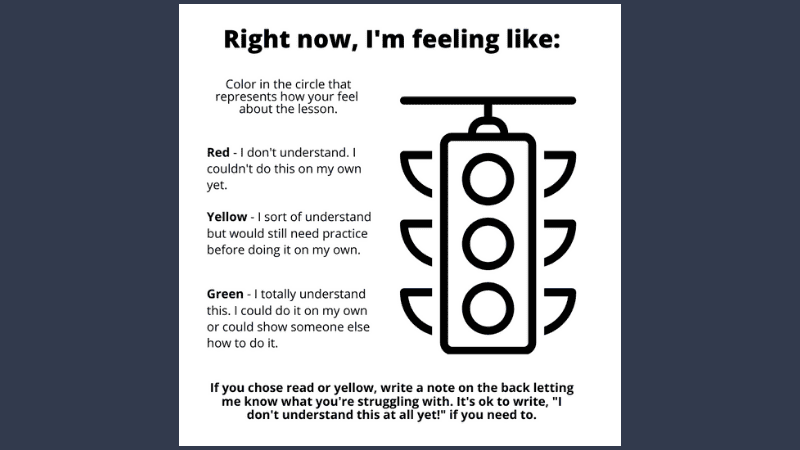
Printing on post-it notes is actually pretty simple and fun! Slap a clip-art picture of a traffic light on there and you have a perfect formative assessment tool that students can complete when time is short at the end of class.
8. 30-Second Share
Challenge students to explain what the lesson they learned was all about to a peer, a small group, or the entire class in 30 seconds. At first, you might want to start at 15-seconds and build their stamina. But by encouraging students to explain everything they can for a set and relatively short amount of time, you’ll be building their confidence and public speaking skills at the same time as you get a good grasp on how much they’ve remembered about the lesson.
9. Venn Diagrams

An oldie but a goodie. Have your student compare the topic you just introduced to a tangential topic you taught in the past. This way, you’re getting a formative assessment on how well they understand the new topic and they’re getting a review of an older topic as well!
10. Poll Them
Polls are a great way to quickly assess student understanding. You can do this in person, or you can use apps like Poll Everywhere, Socrative, or Mentimeter to make free polls students can answer using their phones or computers.
11. S.O.S. Summaries
A great, quick formative assessment idea that can be used at any point throughout a lesson is the S.O.S. summary. The teacher presents the students with a statement (S). Then, asks the students to give their opinion (O) about the statement. Finally, the students are asked to support (S) their opinion with evidence from the lesson. For example, a teacher might say to the students, “Complete an S.O.S. on this statement: The Industrial Revolution produced only positive effects on society.”
S.O.S. can be used at the start of a lesson to assess prior knowledge or at the end of a unit or lesson to determine if students’ opinions have changed or if their support has grown stronger with the new information they’ve learned.
12. FOUR-Corners
This activity can be used with questions or opinions. Before asking the question/making the statement, establish each corner of the room as a different potential opinion or answer. After giving the prompt, each student goes to the corner that best represents their answer. Based on classroom discussion, students can then move from corner to corner, adjusting their answer or opinion.
13. Jigsaw Learning

Perfect when teaching complicated subjects or topics with many different parts. In this formative assessment, teachers break a large body of information into smaller sections. Each section is then assigned to a different small group. That small group is in charge of learning about their section and becoming the class experts. Then, one by one, each section teaches the others about their part of the whole. As the teacher listens to each section being taught, they can use the lesson as a method of formative assessment.
14. Anonymous Pop-Quiz
All the formative assessment power of a pop-quiz with none of the unnecessary pressure or embarrassment. To use this tool, simply quiz your students on the essential information you want to ensure they understand. Instruct each student NOT to put their name on their paper.
Once the assessment is complete, redistribute the quizzes in a way that ensures no one knows whose quiz they have in front of them. Have the students correct the quizzes and share out which answers most students got wrong and which answers everyone seemed to understand the most. You’ll know right away how well the class as a whole understands the topic without embarrassing any students individually.
15. One-Minute Write-Up

At the end of a lesson, give students one minute to write as much as they can about what they learned through the lesson or unit. If needed, provide some guiding questions to get them started.
- What was the most important learning from today, and why?
- Did anything surprise you? If so, what?
- What was the most confusing part of the lesson, and why?
- What is something that will likely appear on a test or quiz, and why?
Challenge them to write as much as they can and to write for all of the 60-seconds. To make it a bit more engaging, consider letting students do this with a partner.
16. EdPuzzle
Students love to watch videos and, because of this, we end up showing a lot of short video clips. While they’re engaging, it’s often tough to determine if our students are getting the information we hoped they would get out of watching them. EdPuzzle solves this problem. The free app allows you to link to a video and add questions that stop the video at times you determine. So you can show your students the video of the Dust Bowl, but stop at various points to ask them what they think life might have been like during this time. You can ask them to make comparisons between what they watch and the characters they’re reading about in class. All of this information is then available for you to view and use for formative assessment.
17. Historical Post Cards
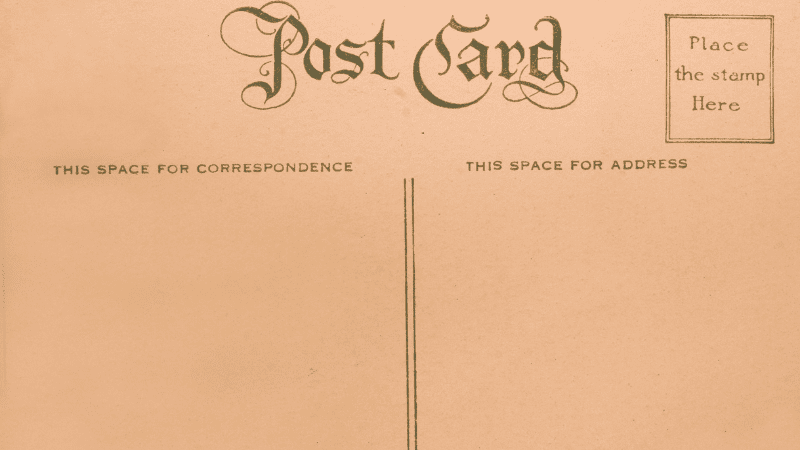
Ask students to take on the role of one historical figure you’ve been learning about in class. Have them write a postcard/email/tweet (as long as it’s short) to another historical figure discussing and describing a political event.
18. 3x Summaries
Have students write a 75-100 word summary of a lesson independently. Then, in pairs, have them rewrite it using only 35-50 words. Finally, have them work with a small group to rewrite it one last time. This time, they may use only 10-15 words. Discuss what different groups decided was the most essential information and why they chose to omit certain information. The conversation about what they left out is just as useful as seeing what they left in.
19. Roses and Thorns

Ask students to write or share out two things they really liked/understood about a topic (the roses) and something they didn’t like/didn’t understand (the thorn).
20. Thumbs Up, Down, or in the Middle
Sometimes things stick around because they just work. Asking students to give you a thumbs up if they understand, thumbs down if they don’t, or thumbs somewhere in the middle if they are so-so about it, is probably one of the fastest formative assessments around. It’s also very easy to keep track of if you’re the teacher standing in the front of the room. Just make sure that you follow up with the thumbs down or thumbs in the middle folks to help them with any confusion.
21. Word Clouds

Ask your students to provide you with the three most essential words or ideas from a lesson and plug them into a word cloud generator. You’ll quickly have an excellent formative assessment that shows you what they thought was most worthy of remembering. If it doesn’t line up with what you think was most important, you know what you need to reteach.
22. Curation
Ask students to gather a bunch of examples that correctly demonstrate the concept you taught. So if you’re studying rhetorical strategies, have students send you screenshots of ads that demonstrate them. Not only will you be able to tell immediately who understood the lesson and who didn’t, but you’ll also have a bunch of great examples and non-examples ready to go for those students who need additional practice.
23. Dry Erase Boards

Another time-tested method of formative assessment that teachers often overlook is individual dry erase boards. They really are an awesome and fast way to see where each student’s level of understanding is at any given point.
24. Think-Pair-Shares
Like so many teacher tools, this one can get stale if overused. But, if used as a method to encourage all students to find their voice and share their learning, it’s perfect for formative assessment. To ensure its effectiveness, ask a question of the class. Have every student write down their own answer. Pair students up with a classmate and give them time to share and discuss their answers. After pairs have had a chance to discuss, have them share out with a larger group or the class as a whole. Circulate, listening to groups who have students you know might be more likely to struggle with the current topic. Collect the papers for extra accountability.
25. Self-Directed

This one can intimidate some students at first, but it can be incredibly powerful to let students themselves choose how they want to demonstrate learning. You can support students by giving them managed choice, but let them decide if they want to show you they understood the essential parts of your lesson by drawing a picture, writing a paragraph, creating a pop quiz, or even writing song lyrics. This shows you’re putting them in charge of their own learning.
What’s your go-to method of formative assessment? Tell us in the comments.
Get more teaching tips and ideas when you sign up for our free newsletters!

